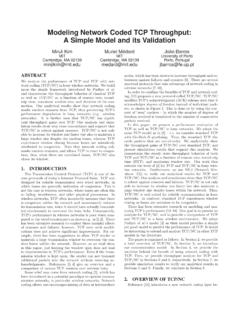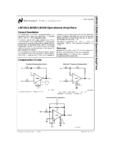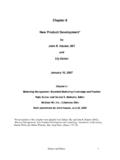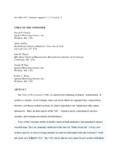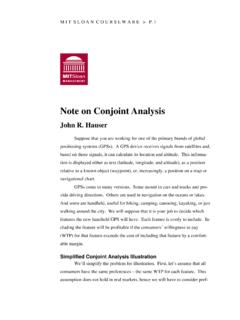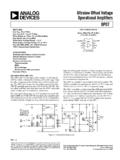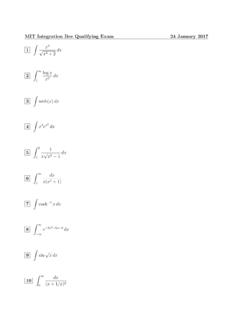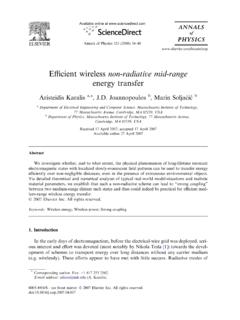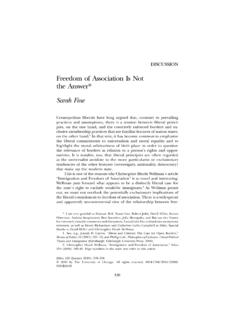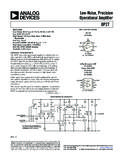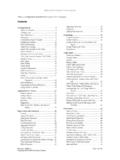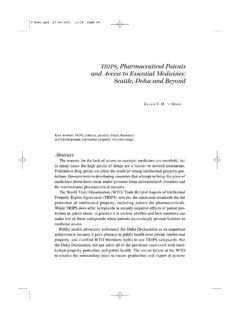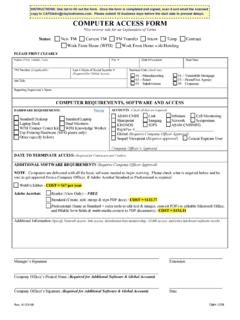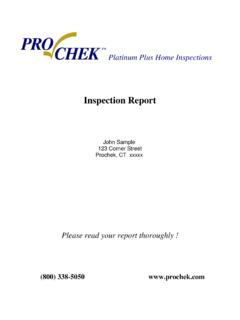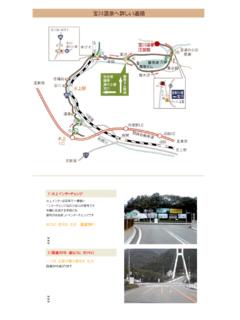Transcription of Metrics to Evaluate R&D Groups - mit.edu
1 Metrics to Evaluate R&D GroupsPhase I: Qualitative InterviewsFlorian ZettelmeyerandJohn R. Hauser March 7, 1995 UpdateCOMMENTS WELCOME!Florian Zettelmeyer is a student at the Massachusetts Institute of Technology, Sloan Schoolof Management, 38 Memorial Drive, E56-345C, Cambridge, MA 02142, (617) 253-3198, (617)258-7597 fax, John R. Hauser is the Kirin Professor of Marketing, MassachusettsInstitute of Technology, Sloan School of Management, 38 Memorial Drive, E56-314, Cambridge,MA 02142, (617) 253-2929, (617) 258-7597 fax, research was funded by the International Center for Research on the Management ofTechnology, Sloan School of Management, We wish to thank the managers, scientists, andengineers who donated their time to talk to us about this important to Evaluate R&D GroupsPhase I.
2 Qualitative InterviewsAbstractWe describe the results of in-depth qualitative interviews with Chief Executive Officers,Chief Technical Officers, and researchers at ten large research-intensive organizations. In theseinterviews we explored how these organizations measure success in the R&D mission and how theyprovide incentives to managers and researchers in R&D. We gained insight into the three tiers ofthe R&D mission: exploring the tools of the future, creating the tools, and pioneering the use of thetools.
3 We learned how these tiers relate to the university and the business units. Metrics of successvary by tier, in part, because the role of corporate investment, the role of managers, and the role ofinternal customers vary by report provides an initial perspective on R&D Metrics from the viewpoint of practicingmanagers and researchers. This perspective, which is Phase I of our research project, suggestsresearch topics which we will explore in greater depth in subsequent Phase II.
4 We summarize theseresearch directions at the end of this 1990, in the alone, private corporations spent over $70 billion on research anddevelopment (R&D). This was approximately of total sales and of total profits. Similar spending occurred in Japan (over $27 billion) and Germany (over $19 billion). In order tojustify investments of this magnitude, private industry must believe that the return on investment(ROI) for R&D exceeds the firms' , investments in R&D are inherently difficult to Evaluate .
5 While the costs areclearly visible and are recorded as they incur, the return on R&D investment may occur many yearsin the future and may be hard to attribute to a specific project. This is particularly true if R&Ddevelops a strategic technical competence that is applied across many projects and pervadeseverything that the organization does. Furthermore, decisions on which projects to fund or whichstrategic competence to pursue must be made under considerable market uncertainty andtechnology long-term goal is to understand how best to allocate R&D investments, but in order toallocate investments we must first understand how firms Evaluate the R&D function.
6 We want toknow how firms decide whether a project, a program, or a strategic direction succeeds and we wantto know how top management rewards and motivates R&D scientists, engineers, and managersbased on their past performance and/or their potential. Once we understand how firms nowperform these tasks we will be better able to develop a theory to describe and to improve this paper we describe phase I of our research. In this phase we spoke to managers andresearchers at a variety of firms who invest heavily in R&D.
7 We report here what they told us. Wehave purposefully chosen not to structure this description within any previously publishedframework. Instead we have attempted to allow the managers and researchers themselves todescribe the world in which they operate. We chose this strategy because many of the organizationsin our sample have recently changed the way they Evaluate R&D or are in the process of doing so1. 1 For example, one organization, which was once run as a central laboratory, is now aligned with the business units,another organization has given the business units more power by allowing them to fund R&D directly, anotherorganization reorganized so the manufacturing and R&D were "laid together," another organization moved its R&Dfrom a center of excellence to the divisions.
8 And another organization has restructured its R&D division to focus them ondeveloping projects that result in profitable products and to Evaluate R&D GroupsPage 2 This report provides a snapshot of the current beliefs; later phases of our research will evaluatethese beliefs from the perspectives of history and paper is structured as follows. We provide a brief description of the sample and ourmethods. We then describe a tiered perspective on the R&D mission and within that structuredescribe the role of customers, managers, and corporate investment.
9 We describe the Metrics thatfirms use and relate those Metrics to motivation and incentives. We close with a set of suggestedresearch directions for the continuation of this research and MethodsThis report is based on qualitative interviews at AT&T Bell Laboratories, Robert BoschGmbH, Cable & Wireless, Chevron Petroleum Technology Company, Electricit de France(Direction des Etudes et Recherches), Hoechst Celanese Advanced Technology Group, PolaroidCorporation, Schlumberger (Measurement and Systems)
10 , the Army (Missile RD&E Center,Army Research Lab), and Varian Vacuum Systems. We feel that this group of firms is sufficient toraise many of the issues of measuring R&D success. Later phases of this research will attempt toquantify these issues through a larger scale survey. At each firm we attempted to speak to the ChiefTechnology Officer (CTO), the person(s) to whom the CTO reported, the person(s) who reported tothe CTO, and researchers within the R&D organization. In total we interviewed 43 managers interviews varied from approximately one hour to a full day of interviews.
